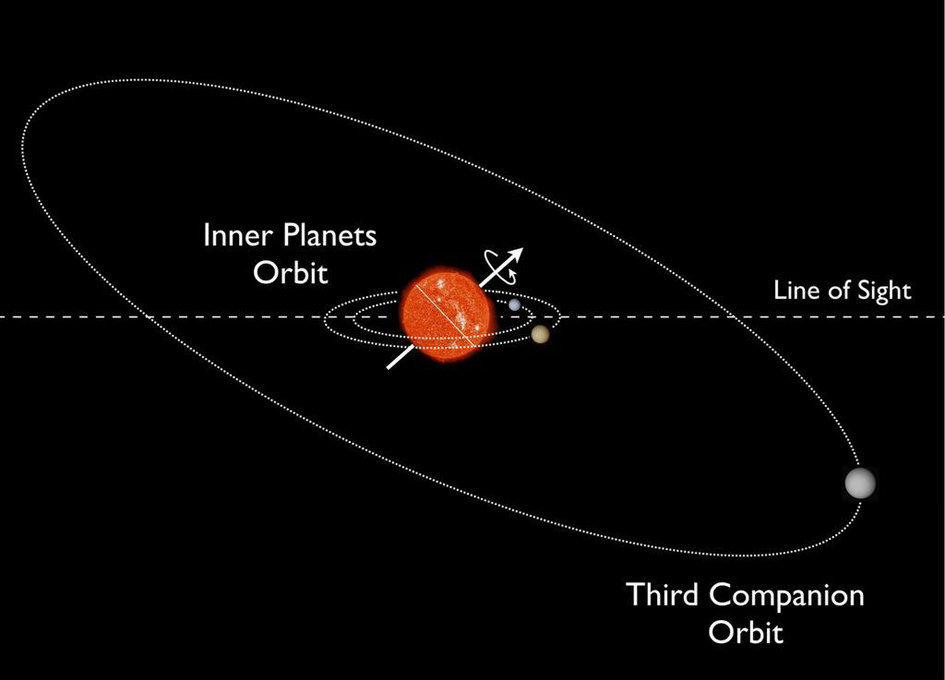A faraway group of planets is puzzling scientists. Newly reported Kepler-56’s system has three planets — two smaller ones close by, and a much larger one further out. The inner planets are orbiting at a tilt to the equator of the host star.
Scientists have seen that tilt before in other systems, but they thought you would need a “hot Jupiter” — a huge gas giant planet close to the star — to make that happen. Here, that’s not the case. The outer planet’s gravity, distant as it is, is pulling the two planets into their tilted orbits.
“This is a very puzzling result that is sure to challenge our understanding of how solar systems form,” stated co-author Tim Bedding, a physics researcher at the University of Sydney.
Kepler-56 is 3,000 light-years away from Earth and has a mass about 30% greater than that of our Sun. As the name implies, astronomers used the Kepler space telescope to make the discovery.
You can read more details in the Oct. 18 edition of Science.
Sources: Iowa State and University of Sydney


